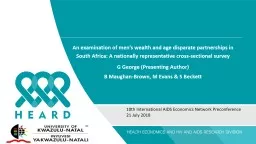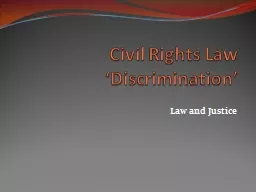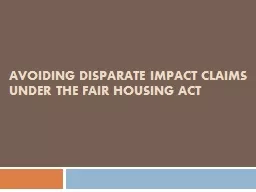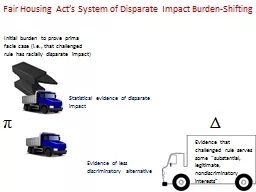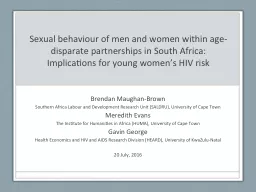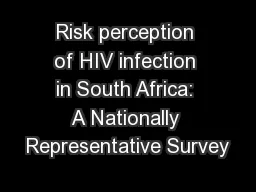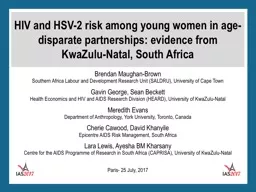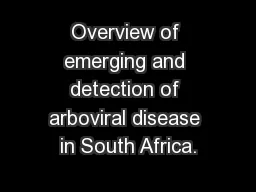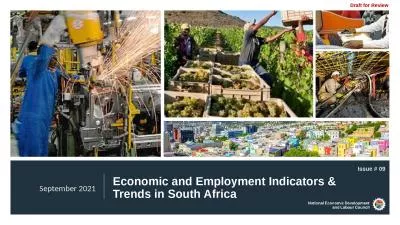PPT-An examination of men’s wealth and age disparate partnerships in South Africa: A nationally
Author : briana-ranney | Published Date : 2018-10-23
G George Presenting Author B MaughanBrown M Evans amp S Beckett 10th International AIDS Economics Network Preconference 21 July 2018 Out of Context Paper Published
Presentation Embed Code
Download Presentation
Download Presentation The PPT/PDF document "An examination of men’s wealth and age..." is the property of its rightful owner. Permission is granted to download and print the materials on this website for personal, non-commercial use only, and to display it on your personal computer provided you do not modify the materials and that you retain all copyright notices contained in the materials. By downloading content from our website, you accept the terms of this agreement.
An examination of men’s wealth and age disparate partnerships in South Africa: A nationally: Transcript
Download Rules Of Document
"An examination of men’s wealth and age disparate partnerships in South Africa: A nationally"The content belongs to its owner. You may download and print it for personal use, without modification, and keep all copyright notices. By downloading, you agree to these terms.
Related Documents

